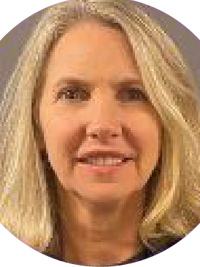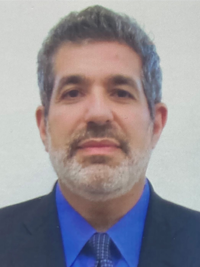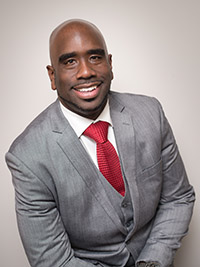Reshaping revenue cycle strategy
As payer audits and claim denials rise, hospitals seek creative solutions to protect their bottom line.
There’s a growing tension between payers and providers that has been made worse by the increased use of AI to deny claims, putting hospital margins and the patient financial experience at risk. In this environment, leading organizations are deploying technologies like AI and automation to combat denials while working to strengthen relationships with health plans.
Recent data from MDaudit points to the pressures hospitals and health systems face as they struggle to protect their ability to deliver on their mission:
- Coding-related denials have increased 126% over the past three years, outpacing authorization-related denials.
- Denials also have surged across care settings. Inpatient-related denials rose 220% over the past three years to an average of $10,000 per claim. Meanwhile, hospital outpatient claim denials jumped nearly 33% to an average of $825 per claim.
- Similarly, the volume of payer audits rose substantially, with external audit volumes doubling during this period.
Using technology to streamline revenue cycle operations is essential for staying ahead of denials and payer audits, but it’s not without challenges, according to participants of a recent HFMA Executive Roundtable. The roundtable, held in June, was sponsored by MDaudit.
Here, healthcare industry leaders discuss how they are using AI, automation and analytics to streamline revenue cycle operations, improve margins and get ahead of payment challenges.
What are the challenges you’ve faced related to the implementation of AI and automation in revenue cycle operations? How did you and your team overcome them?
Sheldon Pink: The payers make frequent changes. We spend months learning to submit claims via a bot, and as soon as the bot starts working, the payer changes the website pages and the process. That’s going to be a part of their strategy moving forward. Although the changes are simple, they throw the entire bot off, and then it starts the process all over again.
David Menashy: The adoption of some of these tools by our own teams is sometimes difficult, especially for our doctors. We’re trying to develop something where the documentation is done for them. We need to ease the burden on the physician for the documentation and they might be very skeptical at the beginning, but then once they see that it actually helps improve documentation and reduces medical errors, and they spend less time reviewing their notes at the end of the day, they start to become believers. It takes a while to get them to adopt. So that’s been the challenge.
Pink: Everything is a great idea, but you’ve got to pay for it, and the challenge is that hospitals aren’t built to invest in what we are investing in. Hospitals invest in healthcare delivery; that’s our core function. We take care of patients. Hospitals are always going to choose an MRI machine over an automation tool for revenue cycle. Today, health systems are being asked to have two models: a model that still supports patient care, but [also one] that gives us all the bells and whistles to make us competitive with retail. We always get compared to Amazon or McDonald’s in terms of salary, but [those are] multi-billion-dollar companies selling products that hospitals are not. Their margins are significantly different from ours, but we’re asked to compete with them in those areas, and it’s just not there.
Ashley Allers: It’s not just about making the investment — we also need to ensure our teams are aligned and equipped to implement these tools effectively. You can purchase the best solutions available, but without thoughtful execution and staff engagement, they won’t deliver the intended value. Unfortunately, with the competing demands we face and limited staffing resources, it’s challenging to dedicate the focused time necessary for successful implementation. This often results in underutilized tools and missed opportunities for improvement.
How does your organization use data or payer relations strategies to proactively engage payers and influence reimbursement outcomes?
Matt Pierson: I work in a rural environment with a very high government payer mix, so that makes it even more important to have [strong] relationships with the commercial payers. We developed a payer scorecard so that we had the information that we could share with the payer to hold them accountable. We can benchmark payers against one another, too. Now, they’re more willing to show up to the table and have some of those conversations because we actually have the data to back up what we’re presenting.
Bob Tracz: The insurance companies are under more financial earnings pressure as well. They are focused on meeting Wall Street expectations, and as a result, they continue to manage care in the markets they serve. … You really do have to dedicate resources to help patients understand what’s going on and keep them engaged throughout the process.
Pierson: Getting those higher-level executives on the phone to make decisions has been huge for us. At the end of the day, we want the same thing; we want good patient outcomes and just an easy process across the board, and we’re not going to get that if we continue to fight with payers. From an analytical standpoint, being able to share our payer scorecard and show them, “We agreed to a 3% yield; you netted out at 2.85%; we need to work on something there,” is valuable. It’s another tool to bring to the table to prove what we’re seeing.
What key payer trends are you seeing that will disrupt the healthcare payment and collections cycle?
Dana Finnegan: With our clients, we’re talking a lot about AI denials on the payer side. From the adjudication policy and payer policy, they seem to be looking for providers to submit claims perfectly. Are they sending vague denial reasons like “information needed?”
Pink: By law, the definition of a clean claim is a bill that is received and requires no additional information. So technically speaking, sending the claim and receiving it is not considered a clean claim. If they say, “I need more information; I need a medical record,” then it’s not a clean claim.
Allers: Many payers are taking aggressive approaches with complex hospital services — particularly Level 4 and Level 5 visits — across various care settings such as clinics and emergency departments. We’ve seen a growing trend where these services are either automatically denied or systematically downcoded, resulting in reimbursement at a lower level than what was billed, regardless of the clinical documentation provided.
Jadene Elden: I started tracking the dollar amounts between emergency room E&M [evaluation and management] levels three, four and five because hospitals have to treat based on resources versus final diagnosis and severity. We’re never going to be in alignment with insurance [companies]. Insurance looks at it from an acuity/diagnosis standpoint; just because the patient had heartburn and not a full heart attack, the hospital has to code the E&M based on the resources involved to rule out the heart attack, but insurance will downgrade payment because the final diagnosis was [lower in] severity.
AI continues to evolve, but it isn’t sophisticated enough to train providers and have dialogue around case examples. We put more RNs [registered nurses] and clinical expertise back in the clinical documentation improvement (CDI) environment to enhance documentation of clinical severity.
How would you describe the level of collaboration that exists across departments or functions, including within the revenue cycle? What impact has this had on your operational performance, outcomes and team dynamics?
Finnegan: As a vendor, we’ve been shocked sometimes to go into organizations where the professional billing office and the center billing office were operating in silos and not sharing information.
Menashy: We didn’t necessarily have silos, but we had the billing functions reporting to different vice presidents, physician revenue cycle on its own and hospital on its own. We decided this makes no sense, so we’ve integrated everything under one reporting structure, and the entire revenue cycle reports to the same person. I think that will help a lot.
Browning: The functions that are centralized in revenue cycle get along pretty well. We did something that’s not unique: we took a senior-level billing person and put them over patient access, and that helped a lot because now, everyone kind of understands how that flows. But there are functions like CDI that don’t look toward the revenue cycle, and [those are] more of a challenge. In some of them, even the payer relationship piece and managed care is outside [revenue cycle]. You don’t always have the camaraderie that you have on what’s in revenue cycle.
Elden: Education of the providers by providers has proven to be a best practice. We traditionally used coders to educate [physicians], but if there is a physician peer who understands coding and documentation, we’ve found more benefit from peer-to-peer education. For example, we’ve been talking about respiratory coding for three years, and once a peer provided case examples [around] documentation, all of a sudden, our providers understood how to code for respiratory. We found that the doctors talk the same language. Our coding education leaders knew we had to change our approach.
Cindy Petty: We’ve taken a similar approach, working across the teams by sharing information through our chief medical officer. From the compliance side, we prep education, and she refines the message, so it’s delivered in a way that resonates with providers. That’s where the collaboration really comes through in the mid-revenue cycle, with coding, billing, compliance and providers working together instead of in silos. It’s made conversations smoother and outcomes stronger because everyone is hearing the message in the way that makes the most sense to them.
Pierson: Everybody is a part of the revenue cycle; we just have to get them to understand that it’s a collaboration. We’re not trying to push back. We’re just looking to get things paid.
Tracz: It gives you a good platform to talk to the providers about the facts and educate them that payers are looking at ways to reduce or deny claims fully. When you have those conversations, you are able to educate the providers on how they can assist with minimizing denials through better documentation and assisting with personal dialogue with payers.
Ramping up revenue cycle resilience
While the challenges facing revenue cycle teams are daunting, the roundtable discussion pointed to the value of developing a collaborative internal and external relationships and leaning into advanced technologies to reduce denial rates and protect revenue. It also demonstrated the importance of data in empowering providers to build more synchronous relationships with payers in service of patients. With access to real-time data and analytics, providers can identify risks sooner, intervene faster and strengthen their audit defense.
PANELISTS

ASHLEY ALLERS
CHFP, MBA, FACHE, is CFO at Van Diest Medical Center in Webster City, Iowa

MIKE BROWNING
is executive vice president and CFO at OhioHealth in Columbus

JADENE ELDEN
is vice president, revenue cycle at Southcoast Health System in Fairhaven, Massachusetts

DANA FINNEGAN
is director of market strategy at MDaudit in Boston

DAVID MENASHY
is vice president of finance at Montefiore Health System in New York

CINDY PETTY
CRCR, EHRC, is director of revenue integrity & compliance at Cass Health in Atlantic, Iowa

MATT PIERSON
CHFP, MBA, is director of managed care contracting at Phelps Health in Rolla, Missouri

SHELDON PINK
FHFMA, MBA, LSSBB, is vice president, central billing office at Methodist Health System in Dallas

BOB TRACZ
is CFO at DCH Health System in Tuscaloosa, Alabama
About MDaudit
MDaudit is a leading healthcare technology provider that partners with the nation’s premier healthcare systems to reduce compliance risk, improve efficiency, retain revenue, and enhance communication between cross-functional teams. Bringing solutions to an industry in transformation, MDaudit enables organizations to minimize billing risks and maximize revenue with an AI-powered, integrated, cloud-based platform that leverages the power of collaboration between people and sophisticated technology, always keeping humans at the forefront of decision-making while driving sustainable change. To learn more, visit www.mdaudit.com.
This published piece is provided solely for informational purposes. HFMA does not endorse the published material or warrant or guarantee its accuracy. The statements and opinions by participants are those of the participants and not those of HFMA. References to commercial manufacturers, vendors, products, or services that may appear do not constitute endorsements by HFMA.






